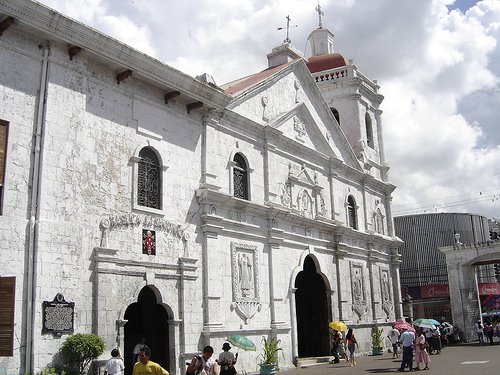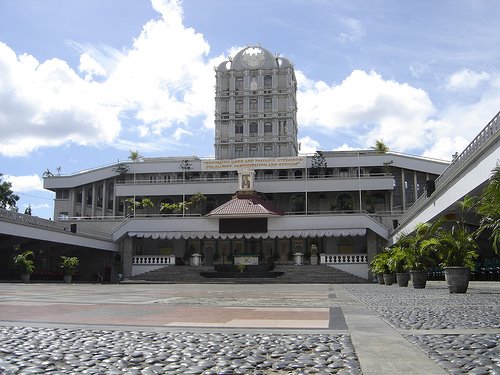 Cebu's oldest Roman Catholic church the Basilica Minore del Santo Niño, also still retains the original stone texture and natural color it had in 1735. It towering facade Muslim Blends Romanesque, and neo-classical architecture of this church. Literally this church of Señor Sto. Niño mean as "Holy Child of Cebu"
Cebu's oldest Roman Catholic church the Basilica Minore del Santo Niño, also still retains the original stone texture and natural color it had in 1735. It towering facade Muslim Blends Romanesque, and neo-classical architecture of this church. Literally this church of Señor Sto. Niño mean as "Holy Child of Cebu"The statue of Santo Niño was given to Hara Amihan (Later became Queen Juan) by Ferdinand Magellana as a pledge of their allegiance with Spain in April 1521. It was the time that portuguese explorer Ferdinand Magellan, in the services of Charles I of Spain, arived in cebu during his voyage to find west route to the Spice Islands. He later, persuaded Rajah Humabon and his wife Hara Amihan, they were later baptize into Catholic Faith.
In February 1565, The Spanish returned to Philippines and cebu was the first stop of Basque explorer Miguel Lopez de Legaspi, who later found Manila. On april 27, He defeated Rajah Tupas(nephew to Humabon), and he destroyed the village in the process. The Santo Niño was found relatively unscathed in the burnt-out dwelling. This incident was quickly acknowledged as miraculous, and the church was constructed on the purported site of the discovery.
Today, the Basilica Minore del Santo Niño is an important historical and religious landmark in Cebu, with devotees forming long line up to pay their respects to the Holy Child. As the church could not accommodate the growing number of people who come to hear mass in the basilica, a pilgrim center was built within the church compound and priests officiate mass in the open-air, theater-like structure. And Candle vendors here are different in any other churches; in the basilica, they dance their prayers in that two-step-forward, one-step-backward rhythm called the “Sinug”. This same rhythm is believed to have inspired the Sinulog dance, performed on Cebu City’s streets by various groups in the Sinulog Grand Parade held every third Sunday of January
The Santo Niño image’s reputation as miraculous is buoyed by reports of basilica helpers that it sometimes goes out of its glass case to take long walks at night. They point to grass stains on the hem of its dress as evidence. The stories are dismissed as superstition but they strengthened beliefs of devotees that the Santo Niño de Cebu, “Cebu’s holy child”, watches over Cebu, and keep it safe away from all the natural disaster.




No comments:
Post a Comment